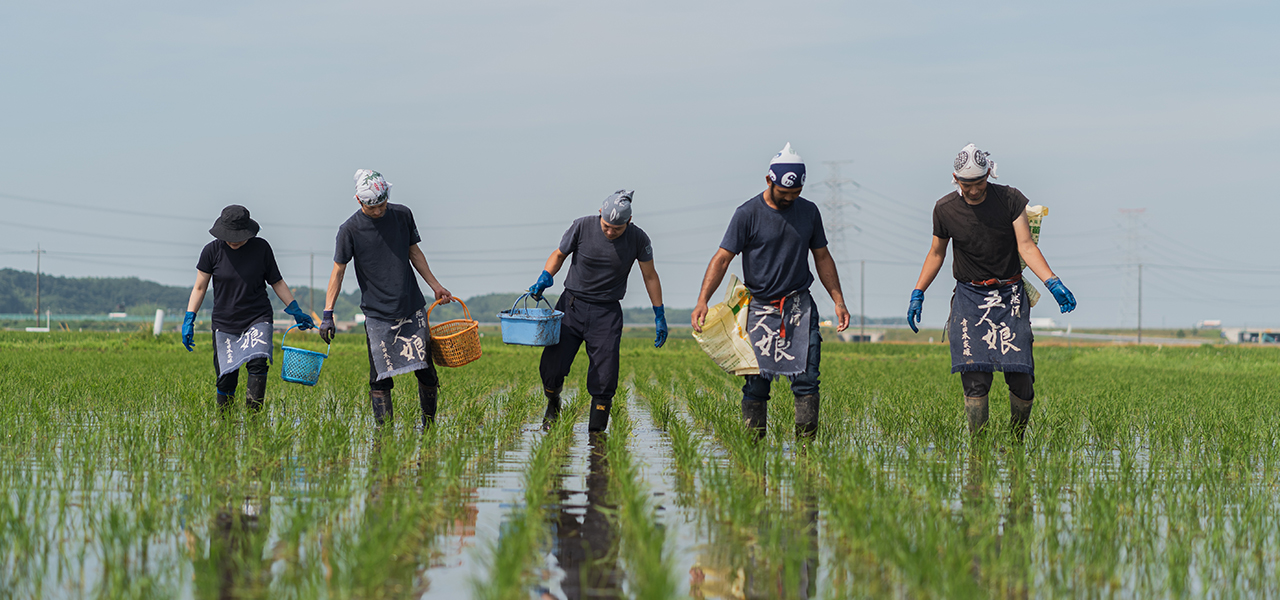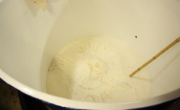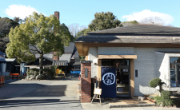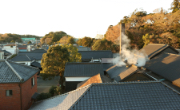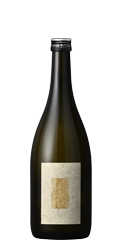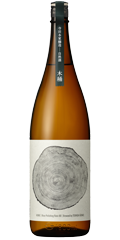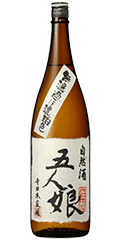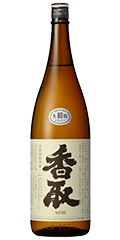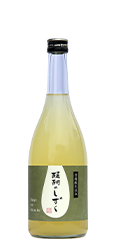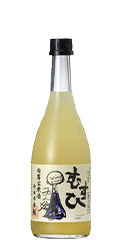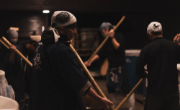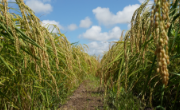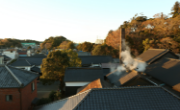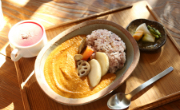About our rice
About our rice
We use two sources of rice for our sake brewing. One is rice carefully grown by contracted farmers, and the other is rice grown in our very own rice paddy.
Thanks to the diligent efforts of the contracted farmers, all the rice that we currently use has been pesticide-free since 2010.
In our own rice paddy, which we completely farm ourselves, seasonal events are held every year, from rice planting in spring and weeding in summer to rice harvesting in autumn. These events are joined by many people, both young and old. Small children coming to these events for the first time tend to hesitate stepping into the muddy ground in the beginning. However, they soon get used to it and start running around in bare feet, chasing the small insects that they spot in the field. The rice planted in this paddy is constantly blessed with smiles and cheers wishing for a healthy harvest.
When winter comes, all the rice that grew vibrantly, absorbing the year’s laughter and good times or embracing the loving care of the contracted farmers, is then used to start preparing the sake-making process.
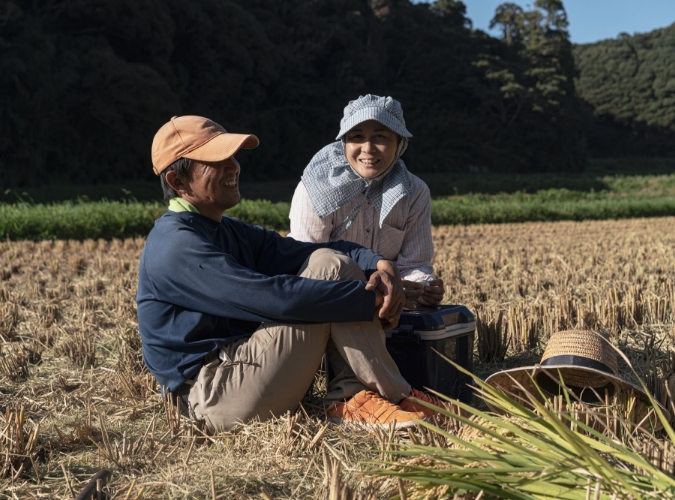
About our farmers
Most of the rice that we use for our sake brewing is grown in the vicinity of our brewery. The rice is nurtured with care and love by more than a dozen organic farmers in the region that work hand in hand with us as close partners of Terada Honke.
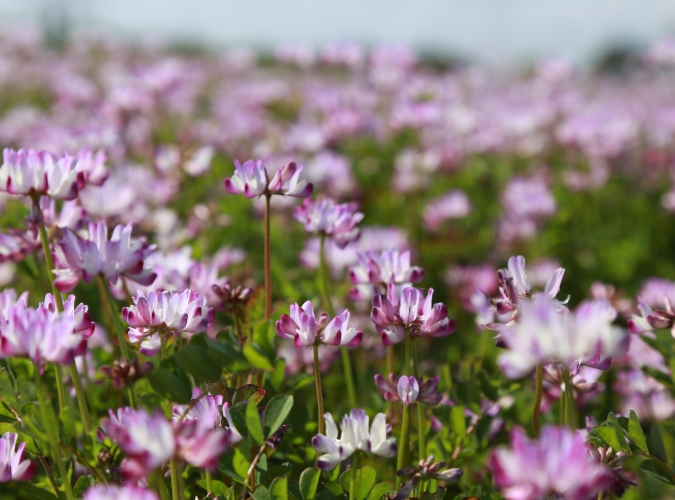
About our rice fields
In the 1980s, we began to grow rice in our own rice paddies. These fields, which were small at first, have now grown to about 2.5 hectares. About 5% of the sake rice used by Terada Honke is harvested in these fields. From spring to autumn, brewers work in the rice paddies, hoping to get in touch with a farmer’s way of thinking and the workings of nature, no matter how small that may be at first. When you look at the rice that they have carefully grown and finally harvested, you will definitely be motivated to see each grain of rice turned into our fine sake.
Our own rice fields include the rice paddies at the foot of a small mountain and at the flat fields adjacent to the Tone River, where we grow natural rice in a variety of environments. Because rice fields based on river sand have low soil fertility, there are some years when we sow lentils to use as green manure. When spring arrives, these rice fields will turn entirely into a beautiful carpet of lotus flowers.
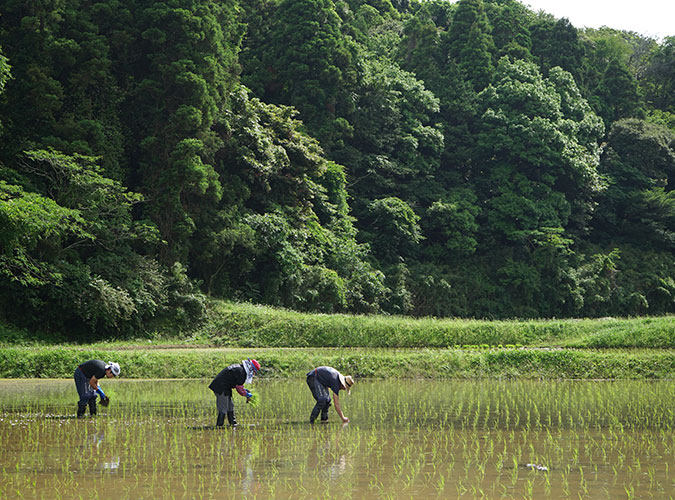
Rice field restoration project
Some yatsuda (rice fields positioned in valleys) can be long-abandoned, but we started cultivating such fields over a period of one year starting in February 2021. Since these fields did not have an irrigation system to feed water for agricultural use, we are relying on the blessings of nature, such as rainwater and groundwater that springs up, so as to make these fields function again as productive rice paddies.
Yatsuda are surrounded by wooded areas, cedar forests, reservoirs, and streams. When humans live in harmony with nature, they create subtle differences in the environment that lead to expanding the diversity of living creatures. The yatsuda that we have cultivated are now serving as a rich habitat of natural life, ranging from freshwater crabs, fireflies, dragon flies, migratory birds such as sashiba, mizu kamakiri (water stick insects), and various invisible microorganisms in the waters and underground.
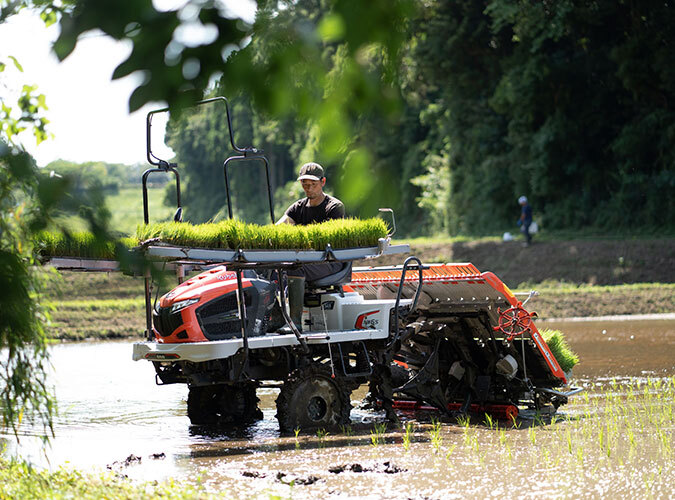
About the rice that we are using
The main types of rice used are Miyama Nishiki, Kameno-o, Yuki Kesho, Nakate Shinriki, Chiba Nishiki, and Koshihikari. For high-polished sake, we use sakamai (rice for sake brewing), such as Miyama Nishiki, while for low-polished sake made from, for example, brown rice or 90% polished rice, we use hanmai (sake rice for consumption), such as Koshihikari.
Around 10 years ago, when we decided to take on the task of reviving old, traditional types of sake, we received a small amount of native rice varieties, such as Chiba Nishiki and Nakate Shinriki, from the national seed bank. These are local varieties that were once cultivated in Chiba Prefecture, which is where Terada Honke is based now. Since then, we have been harvesting them every year and gradually increasing the yield. The seedlings grow so tall that they will not be able keep standing, especially after being hit hard by strong stormy winds. The ears tend to fall off easily as well. They are difficult to grow, but this is interesting and is causing us to repeat trial & errors on a daily basis.
